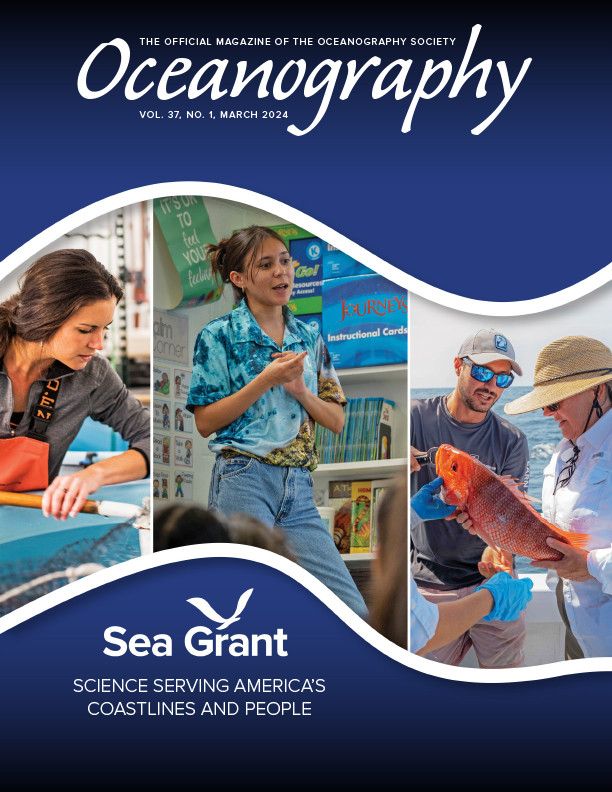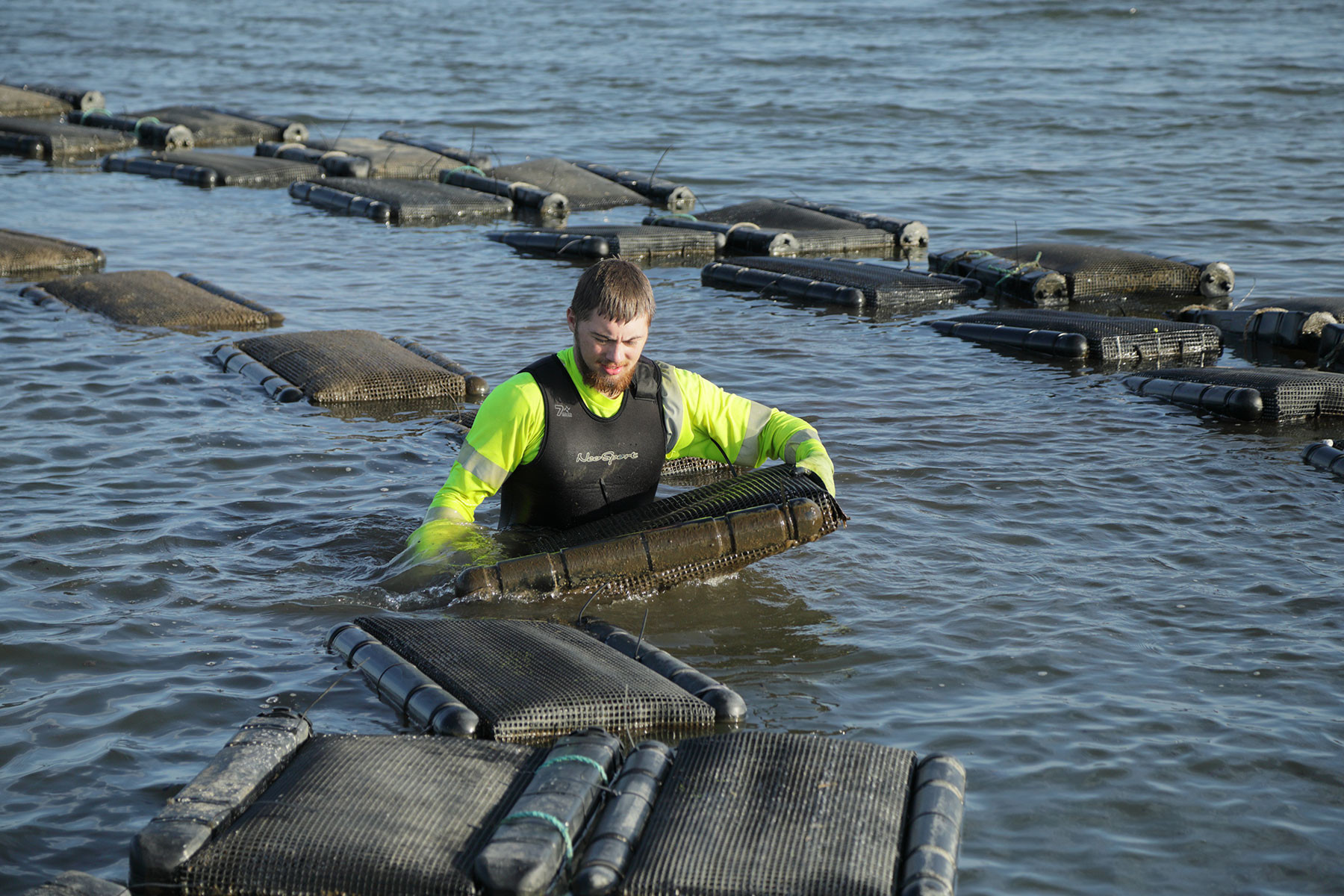Full Text
At the behest of the state and industry, Louisiana Sea Grant (LSG) facilitated the expansion of alternative oyster culture (AOC) across Louisiana’s coastal zone through a $3 million, three-year aquaculture grant program launched in 2021.
AOC involves growing oysters in floating cages or in bottom-placed cages attached to pylons. This intensive production method entails the raising and lowering of cages and the periodic sorting of oysters to minimize losses from predation, biofouling, and the burial effects of disasters like hurricanes, while allowing for harvest when oysters reach market size. Louisiana Sea Grant is helping commercial collaborators explore this new method as a means of diversifying the state’s traditional, reef-based oyster industry, which is facing increasing threats from habitat loss and declining water quality.
|
|
As of this writing, 26 equipment and supply grants have been awarded for seed nurseries, grow-out facilities, and hatcheries, as well as aquaculture parks that contain multiple farms in one location. “Our objective was to supply AOC operators with the necessary resources like education, business tools, equipment and public outreach to increase their chances of success,” explained Thomas Hymel, Louisiana Sea Grant and Louisiana State University AgCenter Marine Extension Agent who served as the project lead.
“AOC isn’t a replacement for the traditional oyster fishery,” added Earl Melancon, who was project co-lead and formerly a Nicholls State University professor with 45 years of experience working with the oyster industry. “It’s a supplement for those fishers who have an interest in developing a new method of bringing a valuable Louisiana product to market.”
An economic analysis conducted by Louisiana Sea Grant’s Laborde Chair Dan Petrolia, Professor of Agricultural Economics at Mississippi State University, supports Melancon’s statement that AOC isn’t a replacement for reef-grown oysters. Success of an AOC operation depends on numerous factors, including the size of the farm, the use of hired vs. owner labor, seed availability, transportation and marketing costs, possible losses from storms, freshwater diversions and most importantly—what the consumer is willing to pay for a boutique oyster.
Beyond administering the grant process and providing on-the-ground extension assistance to grant recipients, Louisiana Sea Grant’s Law & Policy Program (L&PP) analyzed the legal issues surrounding AOC and determined the Louisiana Legislature would need to authorize oyster aquaculture parks. Accordingly, L&PP drafted appropriate legislation, which was introduced by elected representatives and became law (Acts 2005, No. 57; Acts 2022, No. 78).
“Grant recipients included AOC farmers both experienced and new to cage culture,” said Wood Oglesby, AOC program outreach coordinator. “It’s exciting to see the impact of these grants, as we watch our first set of growers start to harvest and sell cage-grown oysters and provide seed from their nurseries.”
Funding for the grant program, administered by Louisiana Sea Grant and awarded by the Iberia Development Foundation, came from the Louisiana Department of Wildlife and Fisheries and the Coastal Protection and Restoration Authority.


